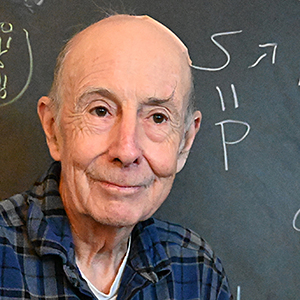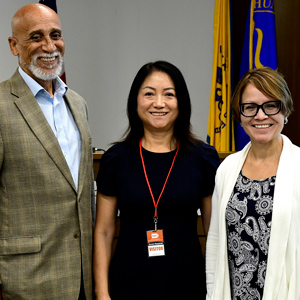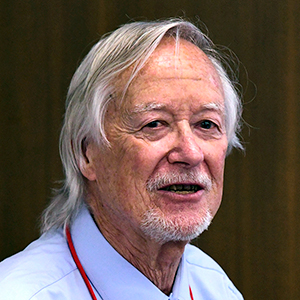The population of older individuals is increasing globally, and most cancers arise as people age, according to experts at an Oct. 26-27 National Institutes of Health (NIH) virtual conference: Age-Dependent Changes in Cancer Biology. NIEHS, the National Cancer Institute (NCI), and National Institute on Aging (NIA) jointly organized the meeting.
Invited speakers discussed common ground in the biology of cancer and aging and identified areas for further research efforts.
Time is not on our side
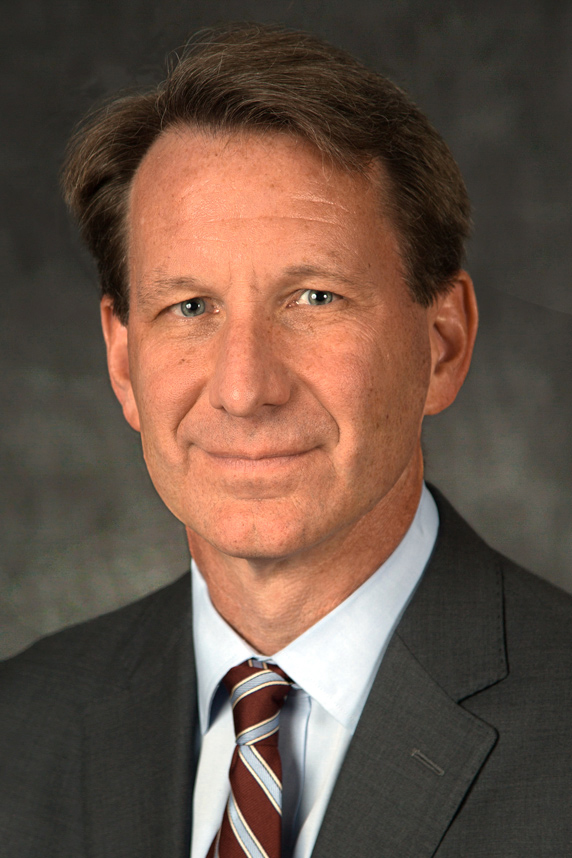 Sharpless spoke at NIEHS in 2017 on the connections between cancer and aging. (Photo courtesy of NCI)
Sharpless spoke at NIEHS in 2017 on the connections between cancer and aging. (Photo courtesy of NCI)Cancer is rare among people younger than 45. There is a sharp rise after that, peaking between 65 to 74 years, according to NCI Director Ned Sharpless, M.D.
Among the possible explanations for this association, one factor stands out. “It is becoming increasingly clear that time itself is a potent mutagen,” he said. Mutagens promote errors in DNA replication that can lead to cancer.
Sharpless discussed key causes of age-related cancers, including the following.
- Abnormal length of telomeres, the protective caps of DNA at the ends of each chromosome. They shorten with each cell division, until they are so short the cell can no longer divide. In cancer cells, telomeres fail to shorten, so the cells can grow quickly and replicate indefinitely.
- Stem cell dysfunction.
- Weakened immune systems.
- Changes in cellular microenvironments that promote cancer.
He pointed to two critical areas that need more attention from researchers in basic science. “The first issue is that many cancer drugs contribute to aging directly,” he said. “Secondly, therapies that are beneficial in young adults can be difficult to use in older adults because of the age-associated reduced resilience of the host.”
NIA Scientific Director Luigi Ferrucci, M.D., Ph.D., echoed Sharpless during his keynote talk. “Nearly half of the cancer risk factors are unknown to this day,” Ferrucci said. He suggested that studying the role of aging in cancer development would significantly fill that knowledge gap.
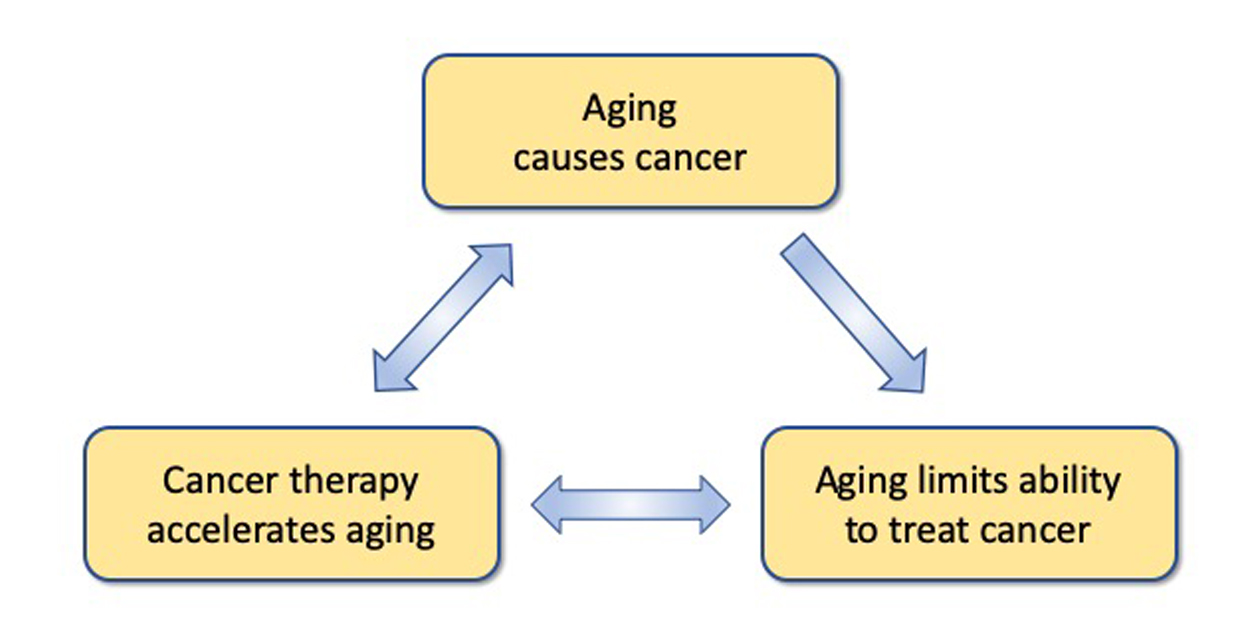 Sharpless and Ferrucci both emphasized the synergistic effect of aging and cancer, especially in older populations. (Photo courtesy of NIEHS)
Sharpless and Ferrucci both emphasized the synergistic effect of aging and cancer, especially in older populations. (Photo courtesy of NIEHS)Environmental factors in aging and cancer
Les Reinlib, Ph.D., moderated a session on the overlap between environmental carcinogens and gerontogens, or agents that quicken the aging process. Reinlib is a health scientist administrator in the NIEHS Exposure, Response, and Technology Branch.
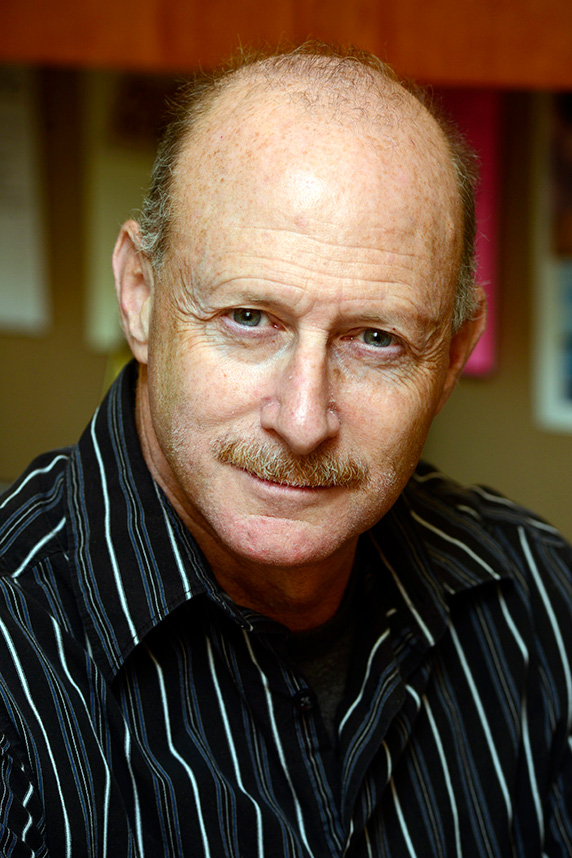 Reinlib develops and administers grant programs involving environmental influences on breast cancer, experimental carcinogenesis, genome integrity, stem cells, and developmental biology. (Photo courtesy of Steve McCaw)
Reinlib develops and administers grant programs involving environmental influences on breast cancer, experimental carcinogenesis, genome integrity, stem cells, and developmental biology. (Photo courtesy of Steve McCaw)Studies suggest that gerontogens — such as air pollutants, cigarette smoke, and arsenic — may cause cancer by promoting cellular senescence, or cell death. Although senescence gets rid of old or damaged cells, it also promotes cancer development by changing the cellular microenvironment.
Susan Neuhausen, Ph.D., from the City of Hope Comprehensive Cancer Center, noted that the U.S. Environmental Protection Agency has registered approximately 85,000 synthetic chemicals for commercial use, only 10% of which have been tested for effects on human health.
She emphasized the need for more human-relevant testing of these chemicals.
Slow down aging to prevent cancer?
One unifying theme among the talks was that aging and cancer share common biological mechanisms.
By slowing down the aging process, it should be possible to reduce cancer incidence. One way to do that is to promote a healthy cellular microenvironment via proper nutrition, according to Trygve Tollefsbol, Ph.D., from the University of Alabama at Birmingham.
Tollefsbol said that certain dietary guidelines could help curb the high prevalence of cancer, as well as obesity, in developed countries.
- Caloric restriction via intermittent fasting.
- Reduced sugar intake.
- Increased consumption of cruciferous vegetables (such as broccoli and cabbage); genistein from soybeans; grapes; and green tea.
Due to the rapid global rise in the population of older adults, experts at the meeting expressed the belief that it is more cost effective to prevent diseases like cancer in the elderly population than to manage them.
(Arif Rahman, Ph.D., is a visiting fellow in Division of the National Toxicology Program Toxicoinformatics Group.)







